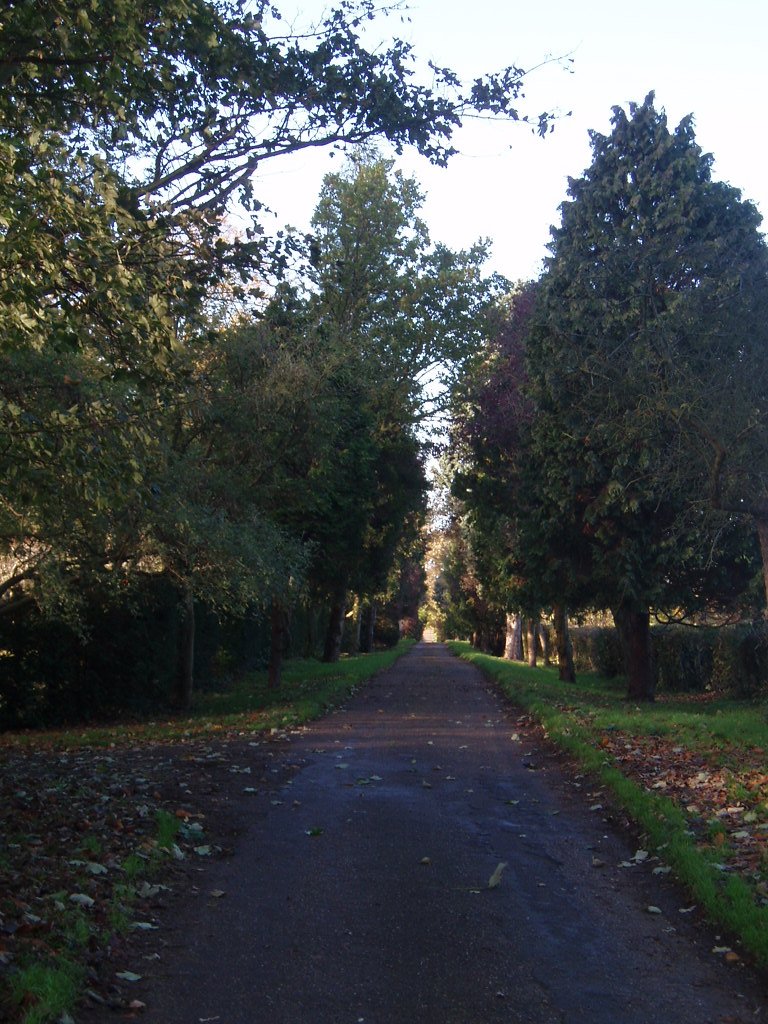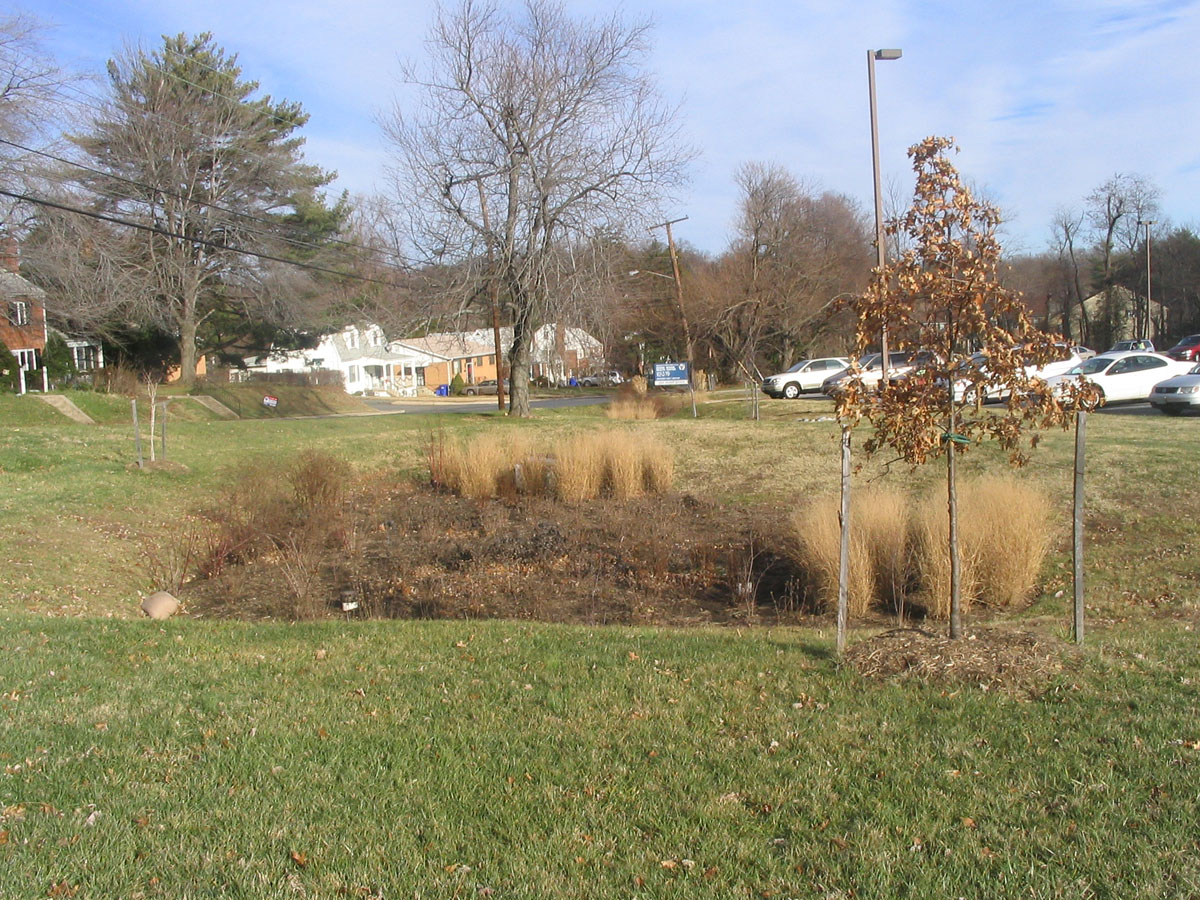|
Resin-bound Paving
Resin-bound paving is a mixture of aggregate stones and resin used to pave footpaths, driveways, etc. It is a kind of permeable paving solution. It is a flexible surfacing material, so is resistant to cracking. The system is mixed on site and cold applied, using a high-quality clear UV resistant resin binder to coat the aggregate particles prior to laying. Unlike resin-bonded surfacing, where a thin layer of resin is applied to the surface and then the aggregate scattered on top (which can then become loose over time and is impermeable), resin and aggregates are thoroughly mixed together prior to laying, ensuring that the aggregate is completely coated and so providing a totally bound surface. As a result, a resin-bound surface is more durable and requires less maintenance – it needs to be swept or power washed at least twice a year, to avoid the build-up of detritus and prevent the growth of moss or algae. UV resin-bound paving is a fully permeable paving solution which allows ... [...More Info...] [...Related Items...] OR: [Wikipedia] [Google] [Baidu] |
Construction Aggregate
Construction aggregate, or simply aggregate, is a broad category of coarse- to medium-grained particulate material used in construction, including sand, gravel, crushed stone, slag, recycled concrete and geosynthetic aggregates. Aggregates are the most mined materials in the world. Aggregates are a component of composite materials such as concrete and asphalt; the aggregate serves as reinforcement to add strength to the overall composite material. Due to the relatively high hydraulic conductivity value as compared to most soils, aggregates are widely used in drainage applications such as foundation and French drains, septic drain fields, retaining wall drains, and roadside edge drains. Aggregates are also used as base material under foundations, roads, and railroads. In other words, aggregates are used as a stable foundation or road/rail base with predictable, uniform properties (e.g. to help prevent differential settling under the road or building), or as a low-cost exte ... [...More Info...] [...Related Items...] OR: [Wikipedia] [Google] [Baidu] |
Stone
In geology, rock (or stone) is any naturally occurring solid mass or aggregate of minerals or mineraloid matter. It is categorized by the minerals included, its Chemical compound, chemical composition, and the way in which it is formed. Rocks form the Earth's outer solid layer, the Earth's crust, crust, and most of its interior, except for the liquid Earth's outer core, outer core and pockets of magma in the asthenosphere. The study of rocks involves multiple subdisciplines of geology, including petrology and mineralogy. It may be limited to rocks found on Earth, or it may include planetary geology that studies the rocks of other celestial objects. Rocks are usually grouped into three main groups: igneous rocks, sedimentary rocks and metamorphic rocks. Igneous rocks are formed when magma cools in the Earth's crust, or lava cools on the ground surface or the seabed. Sedimentary rocks are formed by diagenesis and lithification of sediments, which in turn are formed by the weathe ... [...More Info...] [...Related Items...] OR: [Wikipedia] [Google] [Baidu] |
Resin
In polymer chemistry and materials science, resin is a solid or highly viscous substance of plant or synthetic origin that is typically convertible into polymers. Resins are usually mixtures of organic compounds. This article focuses on naturally occurring resins. Plants secrete resins for their protective benefits in response to injury. The resin protects the plant from insects and pathogens. Resins confound a wide range of herbivores, insects, and pathogens, while the volatile phenolic compounds may attract benefactors such as parasitoids or predators of the herbivores that attack the plant. Composition Most plant resins are composed of terpenes. Specific components are alpha-pinene, beta-pinene, delta-3 carene, and sabinene, the monocyclic terpenes limonene and terpinolene, and smaller amounts of the tricyclic sesquiterpenes, longifolene, caryophyllene, and delta-cadinene. Some resins also contain a high proportion of resin acids. Rosins on the other hand ar ... [...More Info...] [...Related Items...] OR: [Wikipedia] [Google] [Baidu] |
Footpaths
A footpath (also pedestrian way, walking trail, nature trail) is a type of thoroughfare that is intended for use only by pedestrians and not other forms of traffic such as motorized vehicles, bicycles and horses. They can be found in a wide variety of places, from the centre of cities, to farmland, to mountain ridges. Urban footpaths are usually paved, may have steps, and can be called alleys, lanes, steps, etc. National parks, nature preserves, conservation areas and other protected wilderness areas may have footpaths (trails) that are restricted to pedestrians. The term footpath can also describe a pavement/sidewalk in some English-speaking countries (such as Australia, New Zealand, and Ireland). A footpath can also take the form of a footbridge, linking two places across a river. Origins and history Public footpaths are rights of way originally created by people walking across the land to work, market, the next village, church, and school. This includes Mass paths and ... [...More Info...] [...Related Items...] OR: [Wikipedia] [Google] [Baidu] |
Driveways
A driveway (also called ''drive'' in UK English) is a type of private road for local access to one or a small group of structures, and is owned and maintained by an individual or group. Driveways rarely have traffic lights, but some that bear heavy traffic, especially those leading to commercial businesses and parks, do. Driveways may be decorative in ways that public roads cannot, because of their lighter traffic and the willingness of owners to invest in their construction. Driveways are not resurfaced, snow blown or otherwise maintained by governments. They are generally designed to conform to the architecture of connected houses or other buildings. Some of the materials that can be used for driveways include concrete, decorative brick, cobblestone, block paving, asphalt, gravel, decomposed granite, and surrounded with grass or other ground-cover plants. Driveways are commonly used as paths to private garages, carports, or houses. On large estates, a driveway may be the ... [...More Info...] [...Related Items...] OR: [Wikipedia] [Google] [Baidu] |
Permeable Paving
Permeable paving surfaces are made of either a porous material that enables stormwater to flow through it or nonporous blocks spaced so that water can flow between the gaps. Permeable paving can also include a variety of surfacing techniques for roads, parking lots, and pedestrian walkways. Permeable pavement surfaces may be composed of; pervious concrete, porous asphalt, paving stones, or interlocking pavers. Unlike traditional impervious paving materials such as concrete and asphalt, permeable paving systems allow stormwater to percolate and infiltrate through the pavement and into the aggregate layers and/or soil below. In addition to reducing surface runoff, permeable paving systems can trap suspended solids, thereby filtering pollutants from stormwater. Permeable pavement is commonly used on roads, paths and parking lots subject to light vehicular traffic, such as cycle-paths, service or emergency access lanes, road and airport shoulders, and residential sidewalks and ... [...More Info...] [...Related Items...] OR: [Wikipedia] [Google] [Baidu] |
Sustainable Urban Drainage Systems
Sustainable drainage systems (also known as SuDS,Sustainable Drainage System (SuDs) for Stormwater Management: A Technological and Policy Intervention to Combat Diffuse Pollution Sharma, D., 2008 SUDS, or sustainable urban drainage systems) are a collection of practices that aim to align modern drainage systems with natural water processes and are part of ... [...More Info...] [...Related Items...] OR: [Wikipedia] [Google] [Baidu] |
Water Runoff
Water (chemical formula ) is an Inorganic compound, inorganic, transparent, tasteless, odorless, and Color of water, nearly colorless chemical substance, which is the main constituent of Earth's hydrosphere and the fluids of all known living organisms (in which it acts as a solvent). It is vital for all known forms of life, despite not providing food energy, food, energy or organic micronutrients. Its chemical formula, H2O, indicates that each of its molecules contains one oxygen and two hydrogen atoms, connected by covalent bonds. The hydrogen atoms are attached to the oxygen atom at an angle of 104.45°. "Water" is also the name of the liquid state of H2O at standard temperature and pressure. A number of natural states of water exist. It forms precipitation in the form of rain and aerosols in the form of fog. Clouds consist of suspended droplets of water and ice, its solid state. When finely divided, crystalline ice may precipitate in the form of snow. The gaseous state of ... [...More Info...] [...Related Items...] OR: [Wikipedia] [Google] [Baidu] |
Bioretention
Bioretention is the process in which contaminants and sedimentation are removed from stormwater runoff. The main objective of the bioretention cell is to attenuate peak runoff as well as to remove stormwater runoff pollutants. Construction of a bioretention area Stormwater is firstly directed into the designed treatment area, which conventionally consists of a sand bed (which serves as a transition to the actual soil), a filter media layer (which consists of layered materials of various composition), and plants atop the filter media. Various soil amendment such as water treatment residue (WTR), Coconut husk, biochar etc have been proposed over the years. These materials were reported to have enhanced performance in terms of pollutant removal. Runoff passes first over or through a sand bed, which slows the runoff's velocity, distributes it evenly along the length of the ponding area, which consists of a surface organic layer and/or groundcover and the underlying planting soil. ... [...More Info...] [...Related Items...] OR: [Wikipedia] [Google] [Baidu] |
Bioswale
Bioswales are channels designed to concentrate and convey stormwater runoff while removing debris and pollution. Bioswales can also be beneficial in recharging groundwater. Bioswales are typically vegetated, mulched, or xeriscaped. They consist of a swaled drainage course with gently sloped sides (less than 6%). Construction Engineering Research Laboratory. Document no. ERDC/CERL TR-03-12. Bioswale design is intended to safely maximize the time water spends in the swale, which aids the collection and removal of pollutants, silt and debris. Depending on the site topography, the bioswale channel may be straight or meander. Check dams are also commonly added along the bioswale to increase stormwater infiltration. A bioswale's make-up can be influenced by many different variables, including climate, rainfall patterns, site size, budget, and vegetation suitability. It is important to maintain bioswales to ensure the best possible efficiency and effectiveness in removal of po ... [...More Info...] [...Related Items...] OR: [Wikipedia] [Google] [Baidu] |
Impervious Surface
Impervious surfaces are mainly artificial structures—such as pavements (roads, sidewalks, driveways and parking lots, as well as industrial areas such as airports, ports and logistics and distribution centres, all of which use considerable paved areas) that are covered by water-resistant materials such as asphalt, concrete, brick, stone—and rooftops. Soils compacted by urban development are also highly impervious. Environmental effects Impervious surfaces are an environmental concern because their construction initiates a chain of events that modifies urban air and water resources: * The pavement materials seal the soil surface, eliminating rainwater infiltration and natural groundwater recharge. An article in the ''Seattle Times'' states that "while urban areas cover only 3 percent of the U.S., it is estimated that their runoff is the primary source of pollution in 13 percent of rivers, 18 percent of lakes and 32 percent of estuaries." :Some of these pollutants includ ... [...More Info...] [...Related Items...] OR: [Wikipedia] [Google] [Baidu] |

.jpg)





